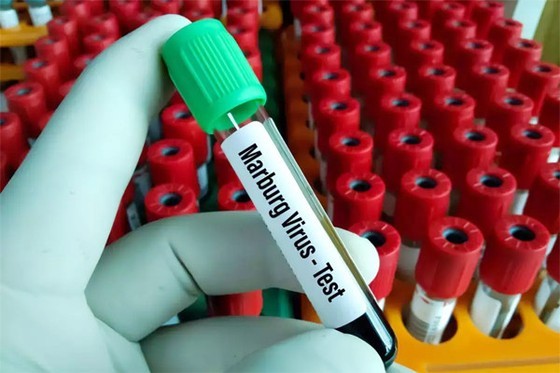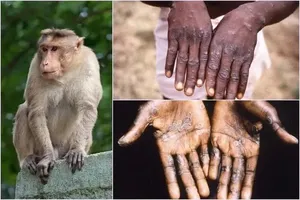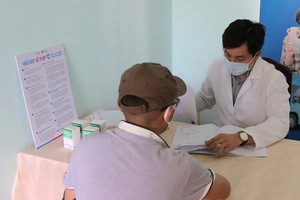 |
Regarding the outbreak of the Marburg virus disease caused by the Marburg virus in Central African countries, the Ho Chi Minh City Center for Disease Control (HCDC) yesterday said that the disease has not been reported in Vietnam yet, but people need to regularly monitor and update the recommendations of the health sector.
According to the World Health Organization (WHO), Equatorial Guinea which is a country on the west coast of Central Africa, confirmed the first outbreak of Marburg virus disease (MVD), formerly known as Marburg hemorrhagic fever, which is a severe, often fatal illness in humans on February 13. WHO said that at least nine people in the western province of Kie Ntem succumbed to the disease.
Earlier, on February 7, the local health authorities in Equatorial Guinea warned of unidentified cases who have experienced fever and hemorrhagic symptoms.
Subsequently, the country's health authorities have sent samples to the laboratory of the Pasteur Institute in Senegal with WHO support to determine the cause of the disease. Out of 8 samples tested at the Pasteur Institute, one sample was positive for the virus.
Currently, Equatorial Guinea has reported nine deaths and 16 suspected cases with symptoms including fever, fatigue, vomiting blood and diarrhea.
Marburg virus disease is a highly virulent disease that causes hemorrhagic fever, with a fatality ratio of up to 88 percent. It is in the same family as the virus that causes Ebola virus disease. Human infection with Marburg virus disease initially results from prolonged exposure to mines or caves inhabited by Rousettus bat colonies.
Once an individual is infected with the virus, Marburg can spread through human-to-human transmission via direct contact (through broken skin or mucous membranes) with the blood, secretions, organs or other bodily fluids of infected people, and with surfaces and materials (e.g. bedding, clothing) contaminated with these fluids.
After an incubation period of 2-21 days, symptom onset is sudden and marked by fever, chills, headache, and myalgia. Around the fifth day after the onset of symptoms, a maculopapular rash, most prominent on the trunk (chest, back, stomach), may occur.
Nausea, vomiting, chest pain, a sore throat, abdominal pain, and diarrhea may appear. Symptoms become increasingly severe and can include jaundice, inflammation of the pancreas, severe weight loss, delirium, shock, liver failure, massive hemorrhaging, and multi-organ dysfunction.
There is currently no vaccine or specific treatment for Marburg virus disease.
























